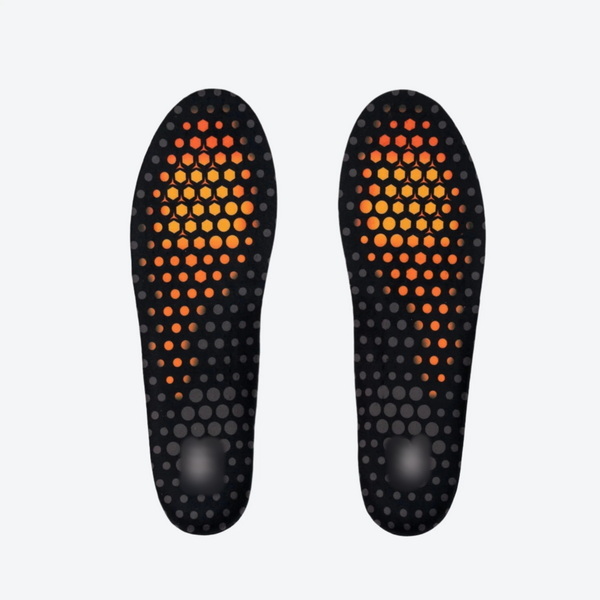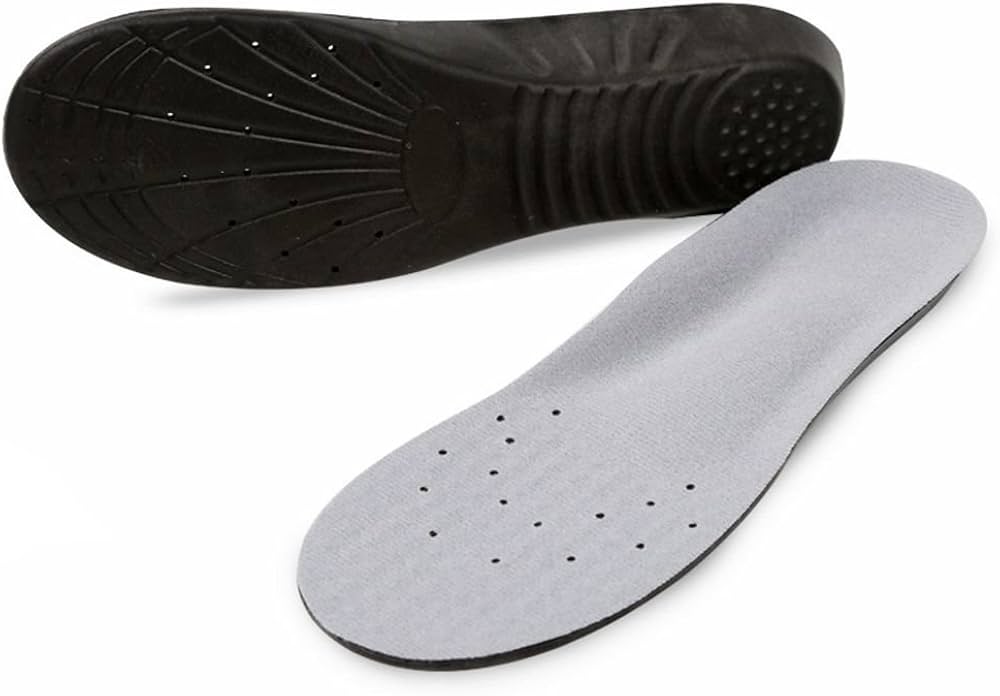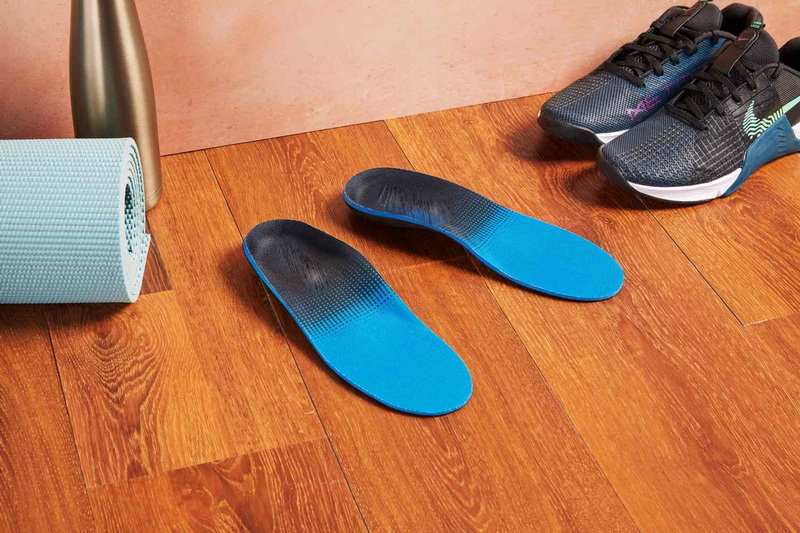Views: 222 Author: Edvo Publish Time: 2025-11-19 Origin: Site











Content Menu
>> Rechargeable Battery Heated Insoles
● Factors Affecting Heated Insoles' Lifespan
>> Battery Quality and Charging Cycles
● How Long Do Heated Insoles Last on Average?
● Signs Your Heated Insoles Need Replacement
● Maximizing Heated Insole Longevity
● Top Brands and OEM Options in Heated Insoles
● Choosing the Right Heated Insoles
● Environmental and Lifestyle Benefits
● Common Misconceptions About Heated Insoles
● Use Cases for Heated Insoles
● Innovations in Heated Insole Technology
>> 1. How do I know when to replace heated insoles?
>> 2. Can heated insoles be repaired if the battery fails?
>> 3. Does using max heat frequently reduce lifespan?
>> 4. Can heated insoles get wet?
>> 5. What warranty do heated insoles usually have?
Heated insoles revolutionize the experience of staying active and comfortable in cold weather. By offering portable warmth directly to your feet, these innovative products have attracted outdoor enthusiasts, sports professionals, workers, and everyday users worldwide. As one of China's leading heated insole manufacturers providing OEM services to international brands, wholesalers, and producers, understanding the real longevity of heated insoles is vital for both buyers and sellers. This comprehensive guide explores what determines heated insole durability, how to extend lifespan, and how to choose products that excel for years of service.

Heated insoles are specialized footbeds equipped with miniature heating elements and power systems. Their main purpose is to deliver consistent warmth to the feet, especially during cold, damp, or snowy conditions. A heated insole usually consists of:
- Heating Wires or Meshes: Embedded to distribute gentle, uniform heat.
- Battery Packs: Most models use rechargeable lithium-ion or lithium-polymer batteries for convenient, portable power. Disposable models rely on chemical reactions for temporary heat.
- Control Features: Wired, remote, or app-based controls let users set and adjust temperature levels.
- Cushioning Materials: Layers of EVA foam, memory foam, or breathable textiles ensure comfort and arch support.
Whether you're walking through winter streets, working on outdoor construction projects, or skiing, heated insoles offer reliable relief from the discomfort of cold feet and help to prevent health risks associated with prolonged exposure to freezing temperatures.
Heated insoles cover a broad category with several designs to suit different needs:
Favored for their versatility and reusability, these insoles can last multiple seasons. A full battery charge often gives users 4-10 hours of warmth, with some premium models featuring quick charging and long standby times.
Advancements in technology have yielded wireless models controlled via remotes or even smartphone apps. These are ideal for users seeking hassle-free activation and adjustments without handling bulky attachments.
Great for emergencies or short outings, disposable heated insoles work through safe chemical reactions. While inexpensive, they're intended for one-time use and typically provide heat for 5-8 hours before needing replacement.
Designed to work with portable power banks, USB models offer continuous heating for indoor settings or long shifts. They are more suited to stationary use due to the need for a connection to a power source.
Choosing the right type depends on your intended use—outdoor adventures, long workdays, or occasional events—and your preference for convenience versus sustainability.
Battery chemistry and capacity are central to the longevity of heated insoles. Premium lithium-ion batteries commonly sustain 300–500 charge cycles before performance noticeably declines. Lower-grade batteries lose efficiency faster and may require replacement within a year. Modern insoles feature built-in protections: overcharge circuits, auto shutoff, and smart charging algorithms to enhance long-term reliability.
The durability of wiring and mesh heating systems directly impacts how long your insoles will function at peak performance. Well-engineered heating systems resist fatigue from repeated flexing as you walk, while subpar products may fail due to broken wires or insulation issues.
OEM manufacturers that invest in precision stitching, robust adhesives, and premium foam contribute to insoles that withstand daily use. Consistency in quality control during production translates to fewer defects, less wear, and longer-living products.
Cold temperatures and moisture accelerate the degradation of battery cells and electronic components. Overusing heated insoles in wet conditions or exposing them to excessive cold can shorten their useful life.
Taking care of heated insoles—cleaning gently, inspecting for wear, charging properly, and storing in dry environments—significantly boosts their operational life. Avoid bending or folding the battery pack area and regularly check connectors for dust or debris.
On average, you can expect rechargeable heated insoles to last between 1 and 3 years of regular use, which translates to roughly 300–500 battery recharge cycles. Disposable heated insoles, however, only last a single use per pair, delivering warmth for several hours. Usage frequency, adherence to maintenance protocols, and environmental factors will influence the exact lifespan:
- Frequent Use: Daily users may see decreased performance after 1 year.
- Occasional Use: Seasonal wearers often get 2–3 years per pair.
- Extreme Conditions: Heavy-duty or harsh environments can speed up wear.
For OEM buyers and professional users, investing in higher-grade models from trusted factories ensures longer service life, saving costs on replacements and warranty claims.

Safety and comfort require timely recognition of wear and tear. Replace heated insoles when you notice:
- Reduced Heating Output: The footbeds feel less warm, or heat coverage becomes patchy.
- Short Battery Runtime: Batteries do not last as long even after a full charge.
- Physical Damage: Cracked casing, exposed wires, torn foam, or broken connectors.
- Battery Failure: Loss of ability to hold charge, swelling, or overheating during use.
- Unstable Controls: Remote or app-based temperature adjustments stop responding accurately.
Regular inspection of heated insoles helps prevent accidents and prolongs the enjoyment of warm footwear.
Smart usage and careful upkeep extend the useful life of heated insoles. Here's how to maximize durability:
- Use Moderate Heat Settings: Avoid using maximum heat when unnecessary; low and medium settings place less strain on batteries and heating elements.
- Charge Properly: Never let batteries discharge completely. Charge insoles while partially full and unplug them promptly when fully charged.
- Routine Cleaning: Wipe gently with a damp cloth, using mild soap when needed. Allow to air dry before storing. Never submerge or machine wash.
- Safe Storage: Keep insoles in a cool, dry location during off-seasons. Shield from humidity, direct sunlight, or extreme temperatures.
- Prevent Physical Stress: Do not bend, twist, or overstretch the insoles, especially in the battery area.
- Replace with Approved Parts: If the battery is removable, use only manufacturer-recommended replacements.
For businesses and large-scale distributors, sourcing heated insoles from experienced OEM manufacturers offers advantages in terms of customization, bulk pricing, and quality guarantees. Worldwide, leading companies and factories in China specialize in custom branding, advanced battery designs, and stringent durability testing. When working with suppliers, consider:
- Warranty Coverage: Most reputable manufacturers offer warranties of 6–12 months on electronics, with shorter terms for batteries.
- Certifications: Look for CE, RoHS, and ISO certifications to confirm safety and consistency.
- Development Support: Custom OEM projects enjoy tailored design, branding, and after-sales service.
Doing thorough research, requesting product samples, and understanding lifecycle data helps ensure you source heated insoles built for real-world longevity.
Selecting the best heated insoles for your needs requires attention to several criteria:
- Battery Life and Type: Opt for high-capacity lithium batteries for long use and fast charging.
- Heating Coverage: Full-foot heating enhances comfort more than spot heat at the toe or heel.
- Fit and Material: Choose insoles that match shoe sizes and feature breathable, cushioning layers.
- Controls: Look for easy-to-use remotes, smart apps, or manual switches, depending on user preferences.
- Water Resistance: Waterproof or water-resistant coatings help resist damage from snow or rain.
- Warranty and Support: Reliable after-sales service gives peace of mind for consumers and business buyers alike.
Reviewing product specification sheets and trying demo units helps ensure the heated insoles will meet the intended purpose, whether for personal use, resale, or OEM production.
Heated insoles deliver far more than simple comfort. As technology evolves, these products contribute to:
- Enhanced Safety: Warm feet lower risks of frostbite, hypothermia, and joint pain during winter sports or work.
- Active Lifestyle Support: Year-round use keeps outdoor enthusiasts active even in cold months.
- Sustainable Options: Rechargeable models reduce waste compared to single-use foot warmers, supporting environmental responsibility.
- Accessible Comfort: Technological improvements have made heated insoles more affordable, broadening use for schools, elder care, and special needs communities.
For business clients or brands serving outdoor, healthcare, or worker protection industries, offering heated insoles appeals to both performance and well-being.
Despite growing popularity, many buyers and users hold mistaken beliefs about heated insoles:
- Myth: Only suitable for extreme cold.
- In reality, adjustable settings make them versatile for cool autumn days and indoor applications.
- Myth: All heated insoles last the same.
- Lifespan greatly depends on materials, battery tech, and care.
- Myth: Washing ruins heated insoles.
- Most are designed for gentle spot cleaning, but soaking or machine washing is harmful.
Clearing up these myths empowers users to make better buying decisions.
Heated insoles have broad applications across industries and lifestyles. Examples include:
- Outdoor Sports: Skiing, snowboarding, mountain hiking, cycling in early spring.
- Occupational Safety: Construction workers, security personnel, agricultural staff working in cold settings.
- Personal Health: Individuals with Raynaud's disease, arthritis, or circulation issues benefit from extra warmth.
- Military and Emergency Services: First responders rely on heated insoles for long shifts outdoors.
As OEM partners, manufacturers can tailor products with size ranges, branding, and battery designs to exacting market needs.
Recent years have seen rapid advancement:
- Smart Control Integration: Bluetooth interfaces enable temperature adjustment from smartphones.
- Improved Battery Efficiency: Modern batteries last longer while remaining lightweight.
- Eco-Friendly Materials: Hypoallergenic foams, recycled textiles, and energy-saving heating elements.
- Modular Design: Some models now feature interchangeable batteries and removable covers for easier cleaning.
Incorporating new features ensures heated insole products stay competitive and respond to changing consumer demands.
Heated insoles offer reliable warmth and comfort with lifespans spanning 1–3 years for rechargeable models and several hours for disposable options. Battery quality, usage habits, and regular maintenance all play key roles in determining overall durability. Investing in products from reputable OEM manufacturers ensures years of service and satisfaction. Follow the recommended care techniques, choose insoles with advanced features, and inspect regularly for wear to enjoy consistent performance. Businesses and individuals alike benefit from smart purchasing decisions and proactive care, making heated insoles an essential accessory for cold-weather comfort.

Watch for signs like reduced warmth, shorter battery life, and visible damage. If controls stop working or insoles won't hold a charge, it's time for a new pair.
A few brands offer removable or replaceable batteries. Generally, however, it is safest to consult the manufacturer or authorized service centers due to electrical risks.
Continuous use of maximum heat settings can wear out batteries and heating wires more rapidly than moderate use. Opt for lower settings when possible.
Most heated insoles are built to be water-resistant, but prolonged exposure to water (immersion) can damage electronics. Always allow them to dry thoroughly after use in wet conditions.
Quality heated insoles deliver a basic warranty of 6–12 months against manufacturing defects but may exclude battery replacements after the initial period. Always check vendor-specific coverage before purchasing.